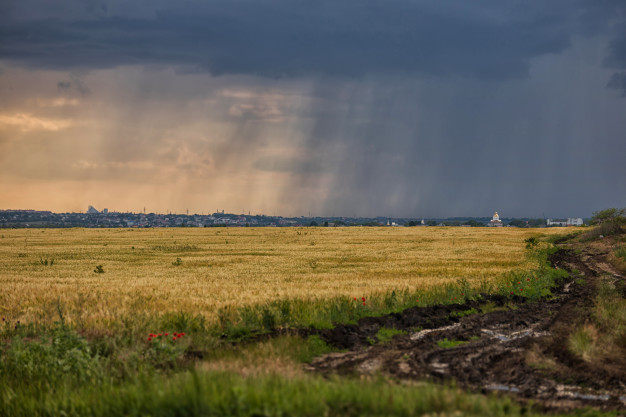Australia: Market softens on forecast rain

Prices for wheat and barley have dropped by up to $15 per tonne on the forecast for 10-25mm for much of south-eastern Australia’s grainbelt next week.
The fall would be enough to arrest a slide in yield potential being seen in many wheat and barley crops on the outer slopes and plains, where subsoil-moisture reserves are down to the wire.
With new crop starting to hit the bins from Central Queensland to South Australia, and road and sea-freighted grain coming into Qld, supply is freeing up , and spot demand for prompt delivery is waning.
| Sep 28 | Sep 21 | |
| Barley Downs | $460 | $475 |
| SFW wheat Downs | $470 | $475 |
| Sorghum Downs | Mar-Apr $445 | $450 |
| Barley Melbourne | $375 | $380 |
| ASW Melbourne | $422 | $425 |
| SFW Melbourne | $420 | $422 |
Table 1: Indicative prices in Australian dollars per tonne.
The Bureau of Meteorology’s eight-day forecast holds no hope of widespread rain for Qld and northern New South Wales, where more growers have this week made a start on barley and early wheat.
CQ wheat is going to export and to consumers in the Maranoa and on the Downs, and Downs feedlots are being supplied with barley coming via boats unloading in Brisbane, and by road from southern NSW and pockets of Victoria.
Trade in sorghum has dwindled as current-crop volume runs low following a huge export program to China, and new-crop prospects look shaky because of the dry conditions.
“It could be a woeful production year on sorghum,” Robinson Grain Toowoomba-based trader Anthony Furse said.
Moisture permitting, early sowing of sorghum on the Downs normally starts in August and makes solid progress in September, with the bulk of the crop usually sown in October.
“Some growers took a punt and scratched into moisture hoping for rain.
“Those planting would be just about dead now.”
Mr Furse said some irrigators have sown sorghum as an alternative to cotton, which is a heavier water user than sorghum.
However, sorghum area planted to date is modest, and a reasonable-sized crop could still go in if soaking rain in the order of 100mm falls in coming weeks.
“A lot of growers have heeded the BOM outlook and are just not taking the risk on a sorghum crop this year.”
Growers in southern and central NSW, Victoria, and South Australia have their fingers crossed for a soaking rain next week which will see crops in lower-rainfall zones hang on to average yield outlooks.
In SA’s South East, and in the Victorian Wimmera, above-average yields could well be achieved if crops get 20-25mm to counter the impact of recent hot and windy weather.
Pearsons Group trader David Munnis said some growers in Victoria were talking about this season having the potential to out-yield last year, when waterlogging hampered production in some districts.
“This time last year…it just wouldn’t stop raining,” Mr Munnis said.
“The outlook on the forecast is quite positive for southern NSW and Vic, and barley and canola are hanging on pretty well; it’s wheat that could really do with a drink.”
Wheat and barley crops from southern Qld to western Vic are at varying stages of development based on time of planting and rainfall to date.
Crops are generally much earlier than last year, when mild and wet conditions delayed the arrival of new-crop grain well past normal dates.
In South Australia, Viterra received its first loads for the 2023-24 harvest on Monday, around three weeks earlier than last year, when the maiden harvest delivery arrived on October 10.
Mr Munnis said the current-crop and new-crop markets have merged as a result of harvest being so close.
“Old-crop liquidity is pretty poor, and end users are covered into harvest,
“It’s basically a new-crop story now, and people are looking at the weather for this coming week.”
Read also
Wheat in Southern Brazil Impacted by Dry Weather and Frosts
Oilseed Industry. Leaders and Strategies in the Times of a Great Change
Black Sea & Danube Region: Oilseed and Vegoil Markets Within Ongoing Transfor...
Serbia. The drought will cause extremely high losses for farmers this year
2023/24 Safrinha Corn in Brazil 91% Harvested
Write to us
Our manager will contact you soon



